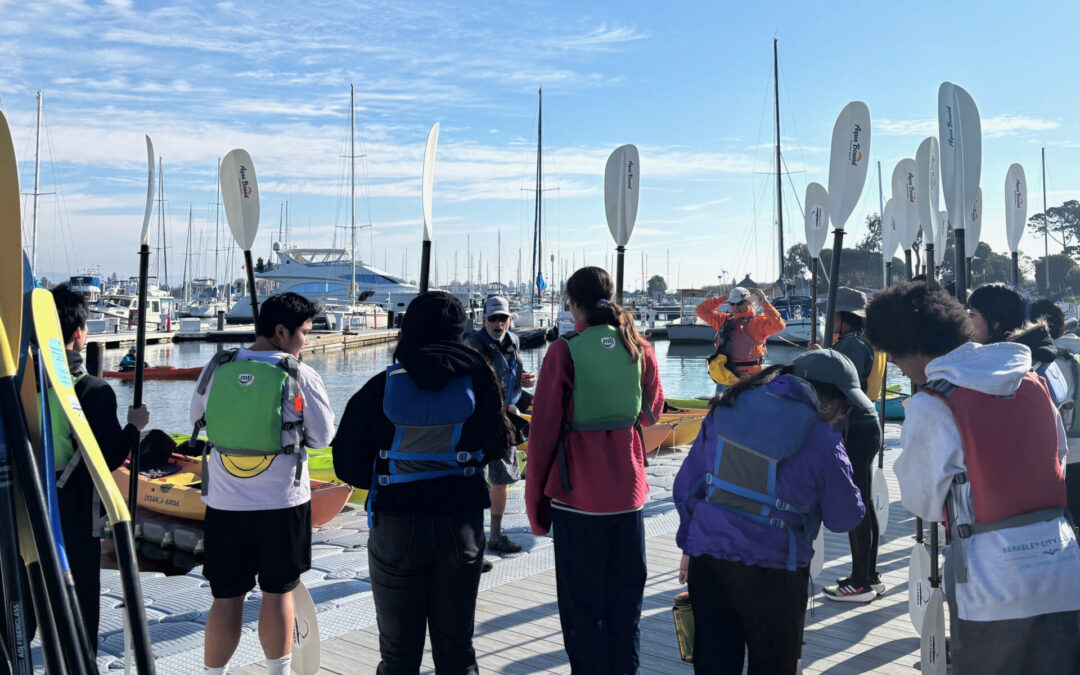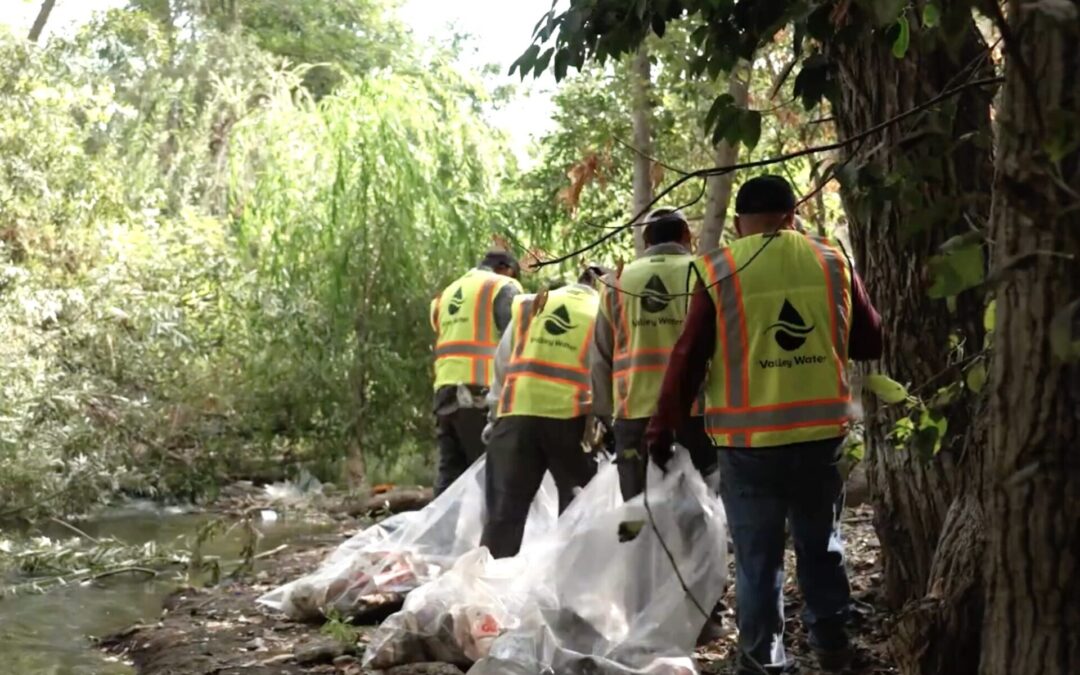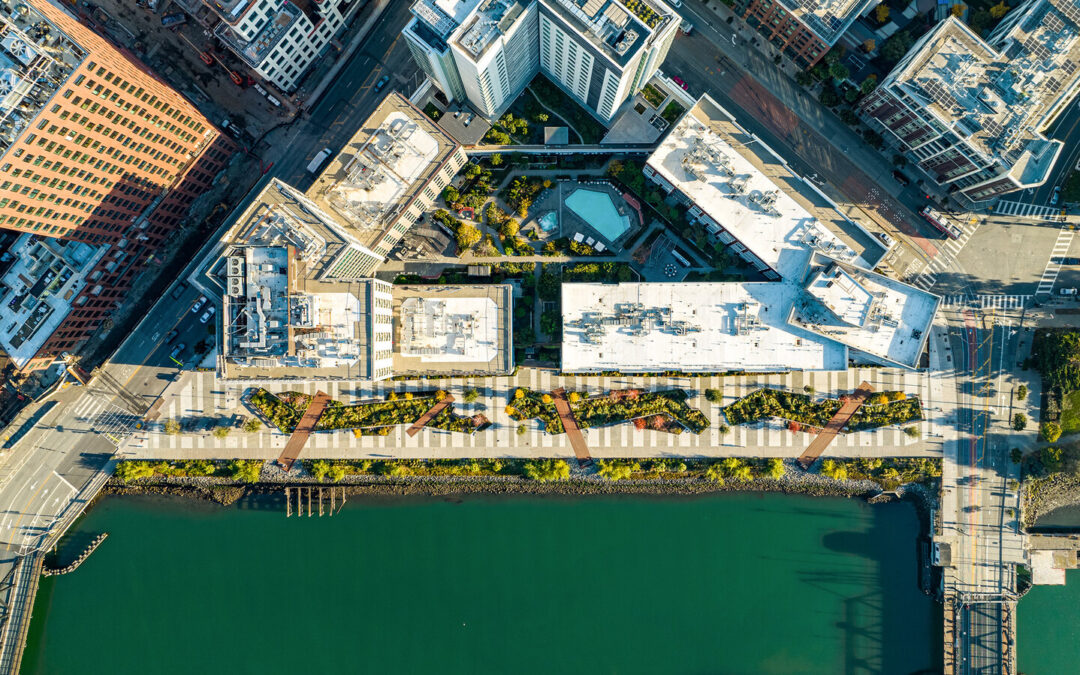The Oakland Goes Outdoors program gives low-income students a chance to kayak, hike, and camp.


The Oakland Goes Outdoors program gives low-income students a chance to kayak, hike, and camp.

A year after adopting a controversial camping ban, Valley Water is trying to move unsheltered people out of the cold and rain.

San Francisco redesigns drains, parks, permeable pavements and buildings to keep stormwater out of the Bay and build flood resilience.
All Stories
The practice of collecting food left behind in fields after the harvest is good for the environment and gives more people access to produce.
The Oakland Goes Outdoors program gives low-income students a chance to kayak, hike, and camp.
A year after adopting a controversial camping ban, Valley Water is trying to move unsheltered people out of the cold and rain.
San Francisco redesigns drains, parks, permeable pavements and buildings to keep stormwater out of the Bay and build flood resilience.
In Santa Rosa’s Pepperwood Preserve, volunteers are learning how controlled fires can clear out natural wildfire fuel before it can spark.
After a 2022 release of toxic dust and a February 2025 fire, people in the northeast Bay town are tired of waiting for safety improvements.
Community groups, climate advocates and a church are coming together to plant pollinator gardens as monarchs, bees see population declines.
The Bay Area needs more affordable housing, but would 196-homes or a buffer against sea level serve local needs better in the years ahead?
The six-month program teaches students aged 17 -24 about the challenges facing communities around the SF Estuary, from Stockton to East Palo Alto.
In Santa Rosa, citizen scientists capture northern saw-whet owls to help further research on climate impacts to the bird.
The $120 million plant opened this fall and treats 8 million gallons of brackish water a day, 75% of which is drinkable.
In this nonfiction comic, explore how the city of Pleasanton is dealing with PFAS- contaminated groundwater.
A new youth advisory team convened by the Greenbelt Alliance and Latino Service Providers is exploring heat disparities in southwest Santa Rosa.
In this edition of our professional column, we look at how groups are reimagining a lot in Ashland Grove and shorelines in San Francisco and Palo Alto.
Two miles of levee are now in place as part of the project to protect Alviso and parts of San Jose, but construction will last much longer.
After witnessing fire disasters in neighboring counties, Marin formed a unique fire prevention authority and taxpayers funded it. Thirty projects and three years later, the county is clearer of undergrowth.
As new research hones in on the importance of sediment transfer, two rivers may hold the key to rescuing beaches and wetlands in Santa Cruz and the Bay Area.
Since Steve Rasmussen and his wife bought a Napa vineyard in 2015 they’ve weathered five fires, and learned how the county and the community respond when disaster strikes.
A group of 30 Oakland-Alameda partners refused to give up on a Bay Farm Island sea level rise adaptation after losing a $50 million grant.
A new study has found that birds are thriving in the nutrient rich oak savannas that burned in the 2018 Mendocino Complex Fire. But bats, not so much.
Hoof by hoof, a family-run targeted grazing operation is reducing fire risk for homes, schools, and open spaces.
A fresh report from SF Estuary Institute and the prospect of major development along the marsh’s borders are putting Suisun back in the news.
A farm high in the Contra Costa County hills helps folks learn from the land and connect with nature.
At Coyote Hills Regional Park, a sweeping 170-acre expansion is reshaping the landscape where wetlands, oak savannas, and historic farmlands meet.
After 10 months of climate leadership training, the graduates of the Resilient Roots program tell us about their projects.
In fairy wings and cloaks, Bay Area youth turned the MLK Shoreline into a living game to tackle climate change — a photo essay.
The Redwood Life project plans to build 12 multi-story buildings atop a former landfill at the edge of Belmont Slough.
A two-year experiment suggests seawalls with nooks and crannies attract more seaweed, crabs, oysters and other bay creatures than smooth ones.
A June 7 event minted 18 new community leaders now better-equipped to care for Suisun City and Fairfield through pollution, heat, smoke, and high water.
Mayor Alma Hernandez has devoted herself to preparing her community for a warming world.
As Valero prepares to shutter its Benicia oil refinery, 400 jobs hang in the balance. Can California ensure a just transition for fossil fuel workers?
Four Bay Area cyclists push for better city infrastructure.
A restoration project blends old-school flood control with modern green infrastructure. Is this how California can manage runoff from future megastorms?
At the Shoreline Leadership Academy, high school students learn about sea level rise through hands-on tours and community projects.
Federal funding cuts halt wildfire protection and farm aid across Sonoma and California’s Resource Conservation Districts.
Despite its pro-environment history, the Golden Gate District is resisting ferry electrification, frustrating advocates for a zero-emission fleet.
We tour Pacheco Marsh, a once-rough patch of Bay shoreline that is now a green refuge for walkers, birds, and even paddleboarders.
A $322M grant powers Oakland’s port electrification — cleaning air, cutting emissions, and investing in community justice.
In KneeDeep’s new column, The Practice, we daylight how designers, engineers and planners are helping communities adapt to a changing climate.
Plant tissue culture can help endangered species adapt to climate change. Amateur plant biologist Jasmine Neal’s community lab could make this tech more accessible.